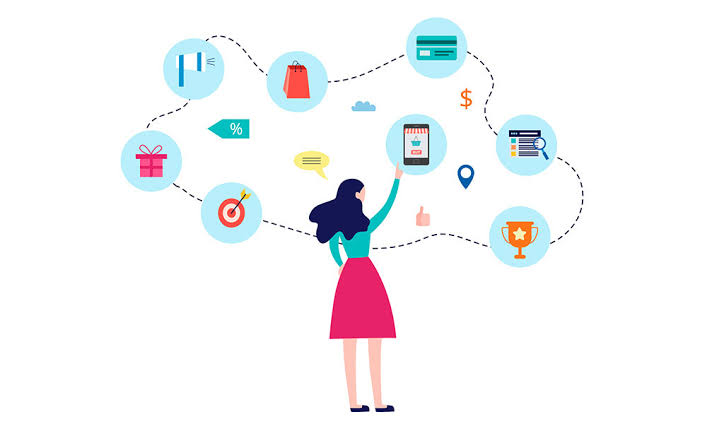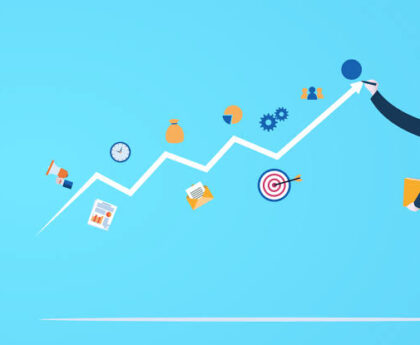
The Customer Journey Unmasked: A Marketer’s Ultimate Guide
Ever wondered why some marketing campaigns hit the jackpot while others flop? The answer lies in understanding the customer journey. From awareness to decision-making, mapping the right touch points ensures higher conversions. This guide breaks down the customer journey’s key stages, showing how brands can optimize their marketing strategies.
Whether you’re in social media marketing, content strategy, or digital advertising, mastering the customer journey is the key to success. Learn how to influence buying decisions with precision and craft marketing strategies that convert.
Table of Contents
- What is the Customer Journey?
- The 5 Key Stages of the Customer Journey
- Awareness Stage
- Consideration Stage
- Decision Stage
- Retention Stage
- Advocacy Stage
- Why Mapping the Customer Journey is a Game-Changer
- How to Optimize Each Stage for Higher Conversions
- Common Pitfalls in Customer Journey Mapping
- Final Thoughts: Mastering the Customer Journey
What Is The Customer Journey?
Every purchase decision a customer makes isn’t random—it follows a structured path. The customer journey represents the complete experience a consumer goes through, from discovering a brand to becoming a loyal advocate.
For marketers, understanding this journey is crucial. Why? Because it helps craft tailored strategies that nudge customers towards conversions at the right time, in the right way. Whether through SEO, paid ads, email campaigns, or social media, an optimised customer journey ensures a seamless transition from interest to purchase.
The 5 Key Stages Of The Customer Journey
1. Awareness Stage: The First Impression Matters
At this stage, potential customers are just realizing they have a problem. They’re searching for solutions but aren’t yet aware of your brand. Effective strategies for this stage include:
- SEO-driven blogs that answer common queries
- Social media ads targeting pain points
- Educational videos and infographics
2. Consideration Stage: The Research Phase
Here, customers weigh their options. They compare products, read reviews, and seek validation. Marketers must provide:
- Detailed product comparisons
- Testimonials and case studies
- Engaging email sequences that nurture leads
3. Decision Stage: The Make-or-Break Moment
This is when customers finalize their choice. They need a push—often in the form of:
- Personalised offers and discounts
- Free trials or demos
- Strong CTAs in landing pages and email campaigns
4. Retention Stage: Keeping Customers Hooked
Acquiring a customer isn’t enough—keeping them loyal is where the real profit lies. Retention strategies include:
- Loyalty programs and exclusive deals
- Personalized post-purchase communication
- Exceptional customer support
5. Advocacy Stage: Turning Customers into Brand Ambassadors
Happy customers don’t just return—they bring in new business. To encourage advocacy:
- Offer referral incentives
- Create community-driven social media engagement
- Encourage user-generated content and testimonials
Why Mapping The Customer Journey Is A Game-Changer
Mapping the customer journey helps marketers anticipate pain points and optimise engagement strategies. By analyzing customer interactions, businesses can:
✔️ Improve conversion rates
✔️ Deliver personalized experiences
✔️ Reduce drop-offs at critical stages
An effective journey map aligns marketing efforts with real customer needs, ensuring brands communicate the right message at the right time.
How To Optimise Each Stage For Higher Conversions
To boost conversions, brands must fine-tune their approach at each stage:
- Use Data-Driven Targeting: Leverage analytics to understand user behavior.
- Personalization is Key: From email campaigns to website experiences, tailor content to individual preferences.
- Engage Across Multiple Channels: Social media, email, and retargeting ads should work together for a seamless journey.
- Reduce Friction: Ensure a smooth checkout process, mobile-friendly designs, and fast-loading pages.
By optimising these touch-points, brands can shorten the sales cycle and increase revenue.
Common Pitfalls In Customer Journey Mapping
Even experienced marketers make mistakes when mapping the customer journey. Here’s what to avoid:
❌ Ignoring Data: Without proper analytics, assumptions can lead to ineffective marketing efforts.
❌ Overcomplicating the Process: A cluttered journey with too many steps confuses potential buyers.
❌ Lack of Cross-Channel Integration: A disjointed experience can lead to lost conversions.
❌ Forgetting Post-Purchase Engagement: The journey doesn’t end at purchase—retention is key.
Avoid these pitfalls, and your brand will see a significant improvement in conversion rates and customer loyalty.
Final Thoughts: Mastering The Customer Journey
Understanding and optimising the customer journey is no longer optional—it’s the backbone of effective marketing. By tailoring strategies for each stage, brands can guide potential customers seamlessly from discovery to advocacy.
Ready to take your marketing game to the next level? Start by auditing your current customer journey strategy and pinpointing areas for improvement. The more refined your approach, the higher your chances of success.





